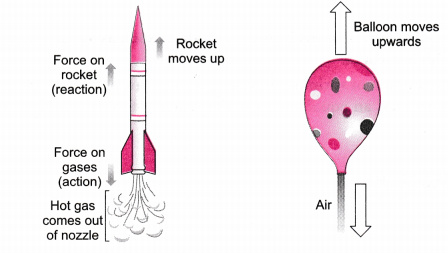Third Law of Motion
“To every action, there is an equal and opposite reaction.“
Applications of third law of motion
It means that if body A exerts a force F1 on body B, and the body 2 exerts a force F2 on body 1, then:

Newton’s Third Law
F1=F2
That is, they are equal in magnitude but opposite in direction.
Whenever two bodies interact, they will exert equal and opposite forces.
This law can be observed anywhere and everywhere in the surroundings.
Some examples of action-reaction pairs are mentioned below:
1) A swimmer propels himself forward while swimming by using his hands to push the water backward. The water then propels the swimmer forward.

2) A man walking on the ground: When someone is walking, they push the ground in a backward direction, and the ground pushes them forward in response, causing them to move forward.

3) A bird uses its wings to push the air downward as it flies. The air causes the bird to rise, which is in accordance with Newton’s third law of motion.
4 ) Jet aeroplane exerts a backward force on air and air exerts an equal and opposite reaction force on the jet aeroplane. The physical principle involved in the working of a jet aeroplane is Newton’s third law of motion.

5 ) The boat’s rower uses the oars to propel the water backward while rowing. The water pushes the boat forward in an equal and opposite direction. The more forcefully the boatman uses his oars to push back the water, the more force the water reacts with and the faster the boat moves.

6) Gun recoil: When a bullet is fired from a gun, the gun recoils in the opposite direction while the bullet exerts forward force on it. Due to the high mass of the gun, it moves a little distance backward and gives a backward jerk to the shoulder of the gunman.

